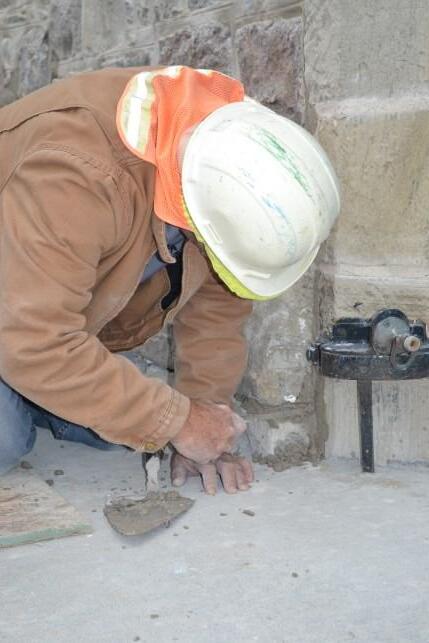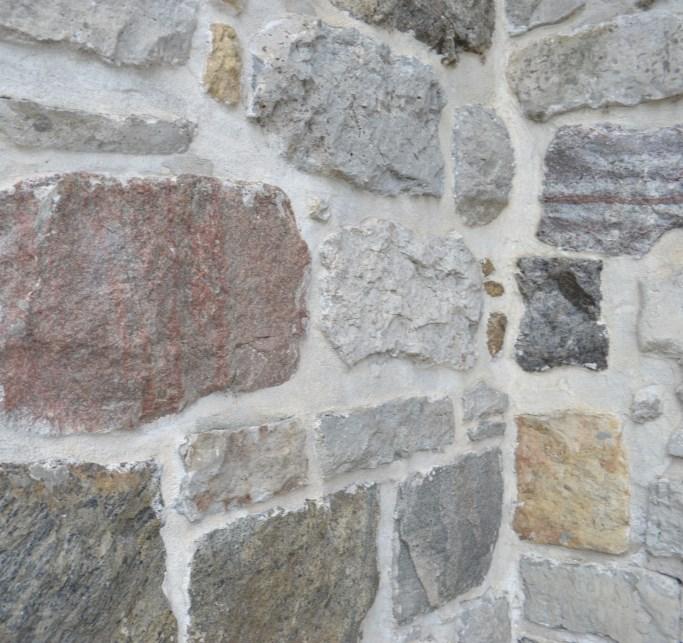
2 minute read
Crafting a Legacy: The Timeless Restoration Journey of Sacred Heart Church
By Chris Whelan
In the heart of Paris, Ontario, where the quiet streets echo with the whispers of history, the Sacred Heart Church stands as a timeless monument to faith and community Over the span of nearly two centuries, this venerable church has weathered the trials of time, bearing witness to the ebb and flow of generations as they sought solace within its sacred walls.
Advertisement
Approximately a quarter of a century ago, the church underwent a transformative restoration process, the decision to repoint the church with modern masonry mortar, while wellintentioned, unwittingly ushered in an era of unintended consequences as the new mortar, lacking the breathability of its historic counterpart, trapped moisture within the church's ancient stones, hastening their decay.
Paul Barrett, with his weathered hands and keen eye for detail honed over 45 years in the trade, recognized the urgent need to rectify this misstep Armed with a profound respect for tradition and a wealth of knowledge passed down through generations of craftsmen, Paul embarked on a journey to undo the damage wrought by time and modernity
Paul Barrett meticulously re-points the mortar during the restoration of Sacred Heart Church, preserving its historic beauty one stone at a time.
The restoration process is not merely a technical endeavor; it is a labor of love and a tribute to the enduring spirit of the parishioners who had gathered within these hallowed halls for generations. Every stone meticulously cleaned of the modern mortar, every crack painstakingly filled with the historic mortar recipe meticulously recreated from centuries-old records, bore
Photos by: Chris Whelan witness to Paul's reverence for the church's storied past
In the realm of historic masonry, lime-based mortar has long been revered for its remarkable ability to self-heal a phenomenon known as autogenous healing. This intrinsic quality of lime mortar plays a vital role in the longevity and resilience of ancient structures, such as the Sacred Heart Church in Paris, Ontario.
Continued on page 25


According to Paul Lime mortar, composed primarily of calcium hydroxide, possesses a unique chemical reactivity that enables it to undergo a process of autogenous healing. When exposed to moisture, carbon dioxide in the air reacts with the calcium hydroxide, forming calcium carbonate a process known as carbonation. This chemical reaction is fundamental to the self-healing properties of lime mortar.
Over time, due to various factors such as natural settling, temperature fluctuations, and structural stresses, microcracks may develop in lime mortar. When moisture infiltrates these microcracks, the carbonation process is triggered. The calcium carbonate that forms within the cracks acts as a binder, gradually filling and sealing the voids
Unlike modern cement-based mortars, which lack the selfhealing capabilities of lime mortar, the autogenous healing of lime-based mortar is an ongoing, cyclical process. As long as moisture and carbon dioxide are present, lime mortar will continue to repair and reinforce itself, ensuring the structural integrity of the masonry.

The autogenous healing of lime mortar contributes significantly to the long-term durability of historic structures By naturally repairing cracks and defects, lime mortar helps maintain the stability and strength of masonry walls over centuries, preserving the architectural heritage for future generations to admire and study.
Continued on page 26










